Introduction – 12 Top Benefits of Eka Pada Rajakapotasana | Step-by-Step Instructions of Eka Pada Rajakapotasana
Eka Pada Rajakapotasana, known as Pigeon Pose, is an admired asana that combines strength, flexibility, and introspection. Named after the majestic bird it matches, this pose invites practitioners to embody the qualities of grace and openness. Eka Pada Rajakapotasana is renowned for its ability to open the hips, stretch the thighs, and release tension in the lower back.

Table of Contents
The Yogic Philosophy of The Eka Pada Rajakapotasana (Pigeon Pose)
Eka Pada Rajakapotasana, or Pigeon Pose, is deeply rooted in yogic philosophy, telling the principle of surrender and openness. The posture boosts practitioners to grip vulnerability and release tension, mirroring the pigeon’s serene and accepting nature.
Yogic philosophy teaches that by educating these qualities on the mat, individuals can extend them to their daily lives, develops a sense of tranquility and balance within themselves and their interactions with the world.
Which Chakra is Activated by Practicing Eka Pada Rajakapotasana (Pigeon Pose)
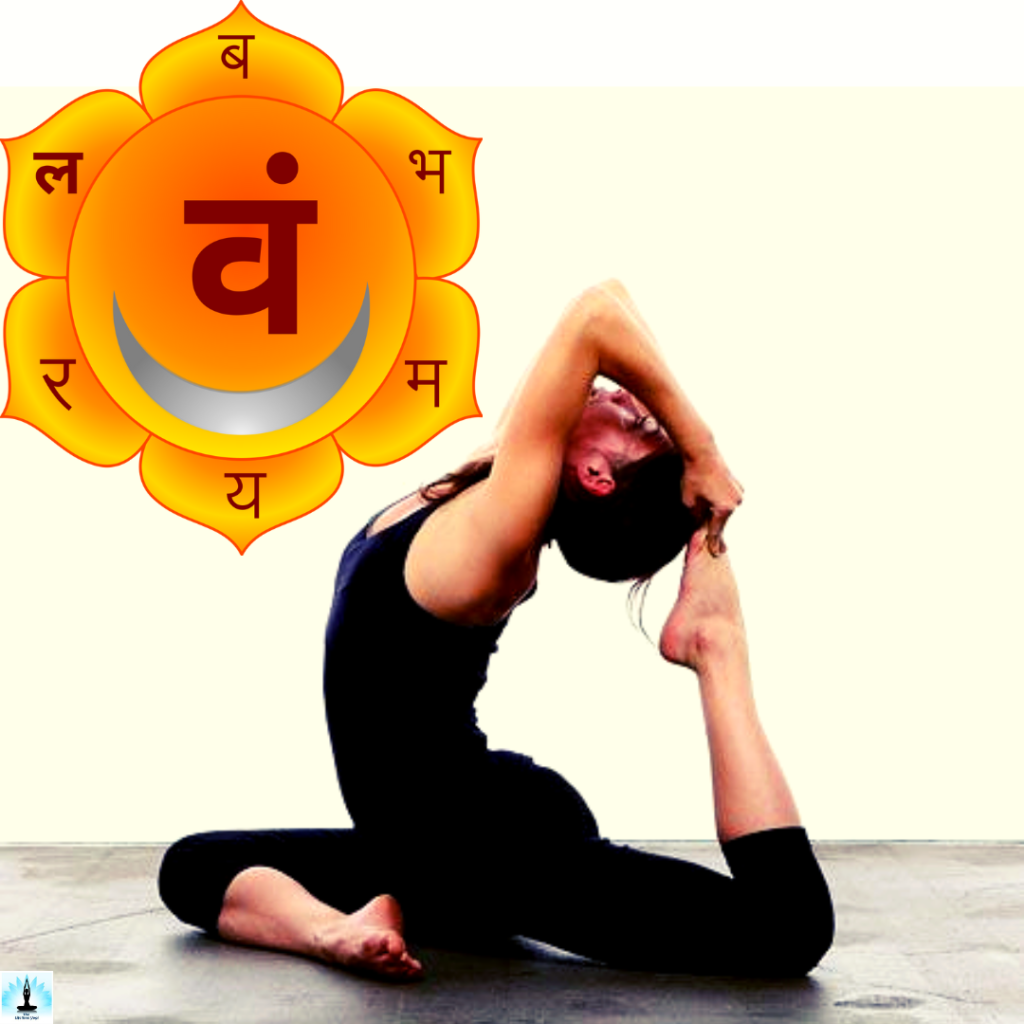
The practice of Eka Pada Rajakapotasana activates the Svadhisthana Chakra, located in the pelvic area. This energy center is associated with creativity, emotions, and the release of stored emotions. The hip-opening nature of Pigeon Pose stimulates and balances the energy flow in the Svadhisthana Chakra, fostering a sense of emotional well-being, creativity, and openness.
Top Benefits of Eka Pada Rajakapotasana (Pigeon Pose)
- Hip Flexibility: Eka Pada Rajakapotasana is renowned for its ability to open and stretch the hip flexors, enhancing flexibility in the hips and groins.
- Thigh Stretch: The pose deeply stretches the thighs, helping release tension and tightness in the quadriceps and hamstrings.
- Lower Back Relief: Practicing Pigeon Pose can alleviate tension and discomfort in the lower back, making it beneficial for individuals with lower back issues.
- Hip Flexor Release: The pose targets the hip flexors, providing a release for these often-tight muscles and promoting increased mobility.
- Emotional Release: Eka Pada Rajakapotasana is known for its potential to release stored emotions, offering a therapeutic aspect that extends beyond the physical.
- Stimulates Digestive Organs: The compression in the abdominal area during the pose stimulates digestive organs, potentially aiding in digestion.
- Enhances Blood Circulation: The stretch and extension involved in Pigeon Pose encourage healthy blood circulation, benefiting the entire lower body.
- Opens Chest and Shoulders: The pose encourages a gentle opening of the chest and shoulders, fostering better posture and relieving tension in these areas.
- Svadhisthana Chakra Activation: Eka Pada Rajakapotasana activates the Svadhisthana Chakra, promoting a balanced flow of creative and emotional energy.
- Improves Posture: Regular practice of Pigeon Pose contributes to improved overall posture by releasing tension in the hips and lower back.
- Balances Nervous System: The calming effect of Pigeon Pose on the nervous system can help reduce stress and anxiety levels.
- Strengthens Core Muscles: The engagement of core muscles in the pose contributes to abdominal strength and stability.
The gentle backbend in Pigeon Pose encourages flexibility in the spine, helping a healthy range of motion.
Step-by-Step Instructions of Eka Pada Rajakapotasana (Pigeon Pose)
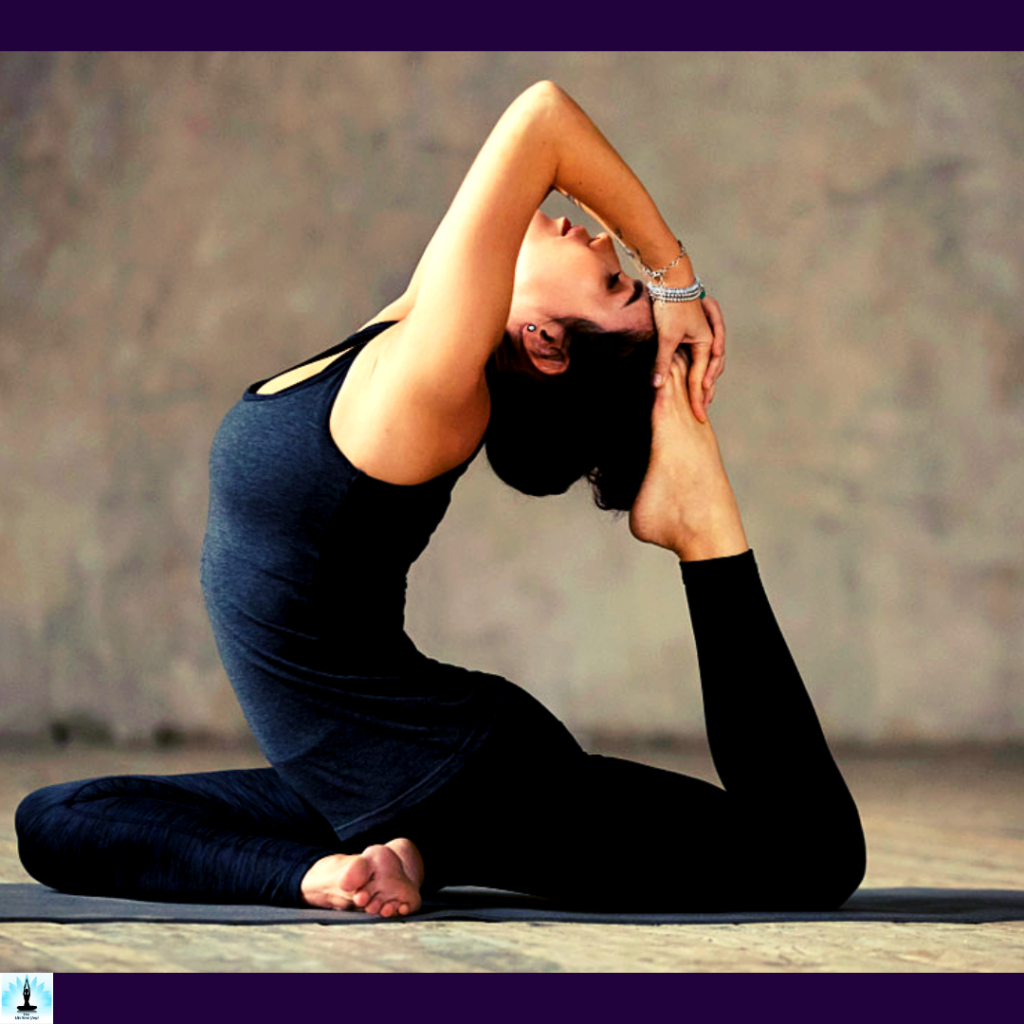
Starting Position:
Begin in a tabletop position on your hands and knees, ensuring wrists are aligned under shoulders and knees under hips.
Setup for the Front Leg:
Slide your right knee forward towards the outer edge of the mat, placing it behind your right wrist. The right ankle should be near the left wrist.
Extend the Back Leg:
Straighten your left leg behind you, pointing the toes, and ensuring the leg is in line with the hip. The top of the foot should rest on the mat.
Hip Alignment:
Check that the hips are squared to the front of the mat. The right hip may lift, so actively press it down towards the mat.
Pelvic Floor Engagement:
Engage the pelvic floor muscles and draw the navel gently inwards to support the lower back.
Front Leg Alignment:
Ensure the right shin is parallel to the short edge of the mat. The right foot can be flexed to protect the knee.
Adjust the Back Leg:
Move the left leg back further if comfortable, allowing the hips to sink closer to the mat for a deeper stretch.
Alignment of the Torso:
Lengthen the spine and hinge forward at the hips, walking the hands forward. Maintain a neutral spine and avoid rounding the back.
Forearm Support (Optional):
For a deeper stretch, lower onto the forearms, keeping the chest lifted. Ensure the weight is evenly distributed between both hips.
Hold and Breathe:
Hold the pose for several breaths, allowing the hips to soften and release tension. Focus on steady, deep breaths.
Switch Sides:
To release, press into the hands, lift the hips, and slide the right leg back to tabletop position. Repeat the steps on the opposite side.
Advance Variations of Eka Pada Rajakapotasana (Pigeon Pose)
Mermaid Pose (Eka Pada Rajakapotasana Variation):
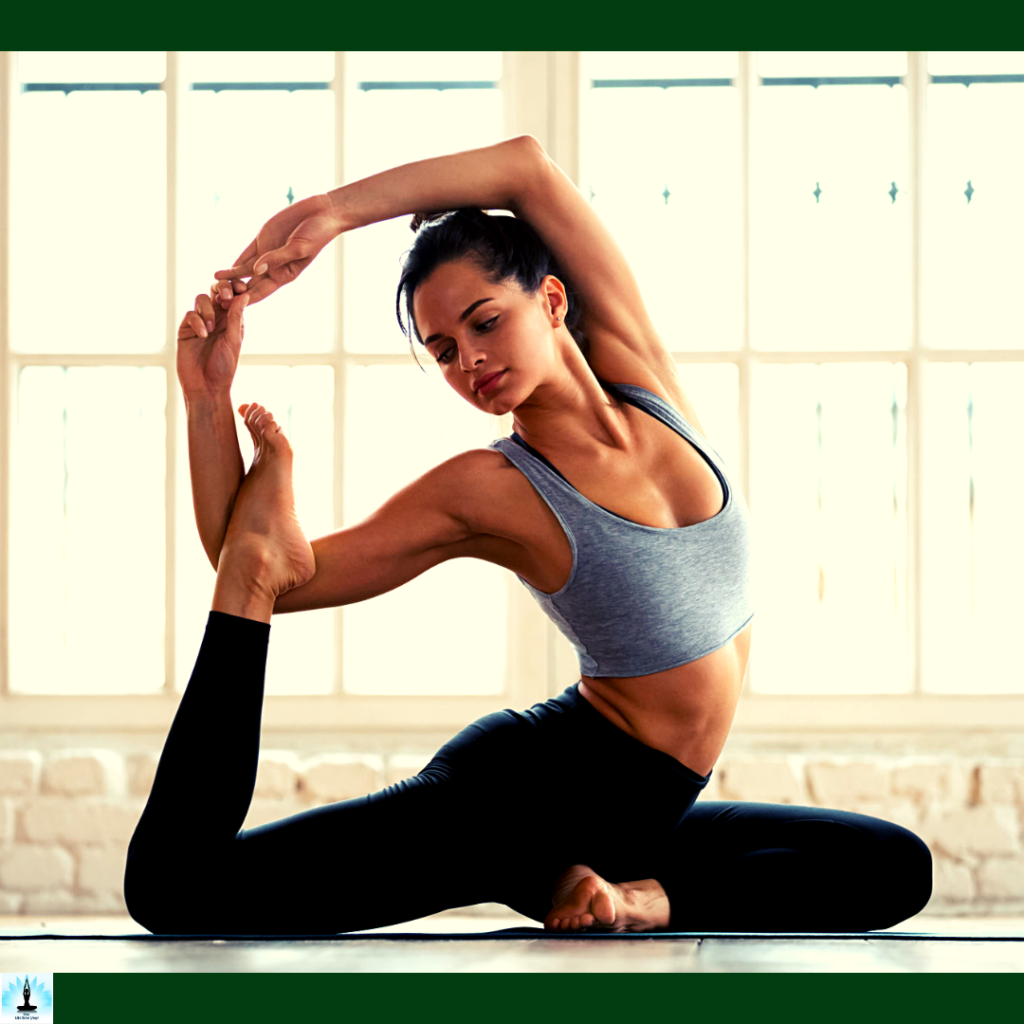
In this advanced variation, practitioners deepen the hip opening by bending the back knee and bringing the foot towards the head. The hands clasp the back foot, resembling a mermaid’s tail. This variation requires significant flexibility in the back hip and quadriceps, as well as a strong backbend.
King Pigeon Pose (Eka Pada Rajakapotasana II):
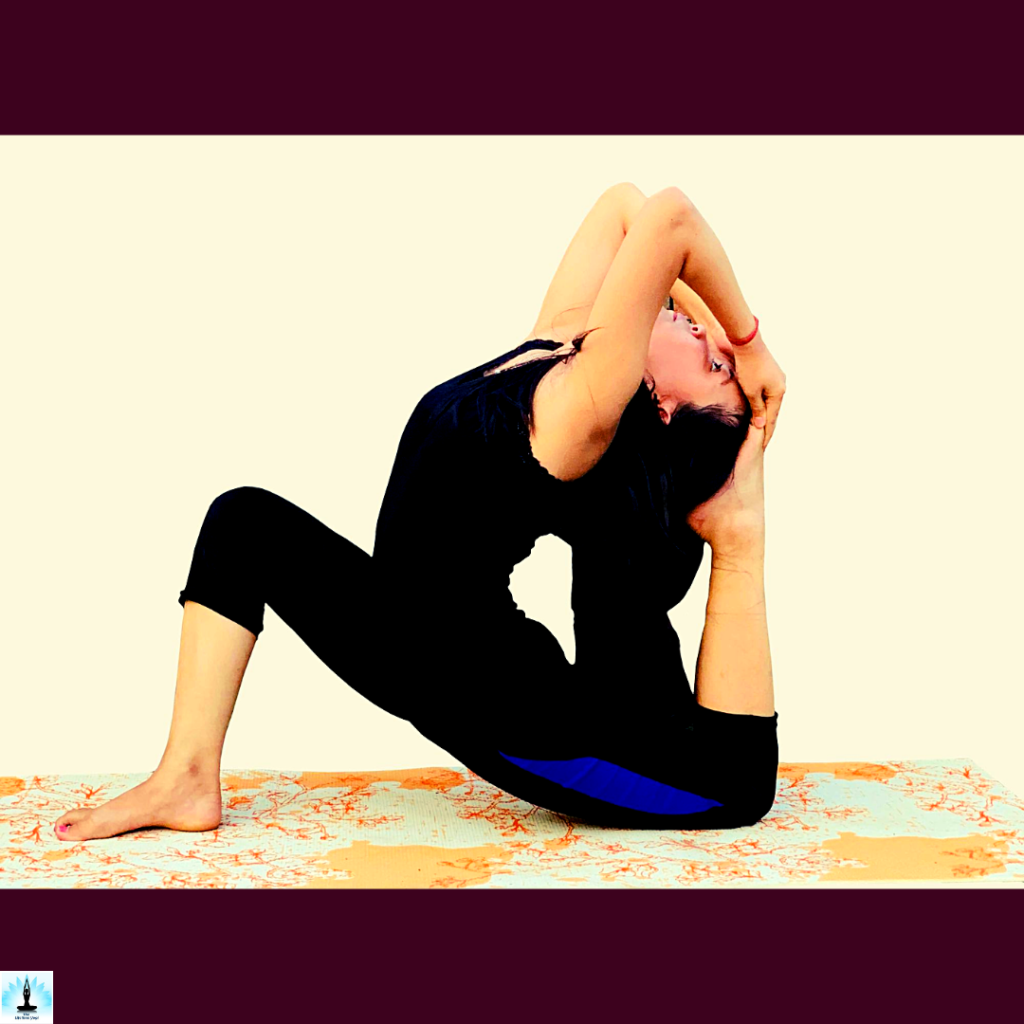
King Pigeon Pose takes the hip-opening aspect of Pigeon Pose to the next level by incorporating a backbend. The front leg is bent at the knee, and the foot is lifted towards the head, allowing the hands to reach back and clasp the foot. This variation demands a high degree of flexibility in the hip flexors, quadriceps, and shoulders.
Eka Pada Rajakapotasana III (One-Legged King Pigeon Pose):
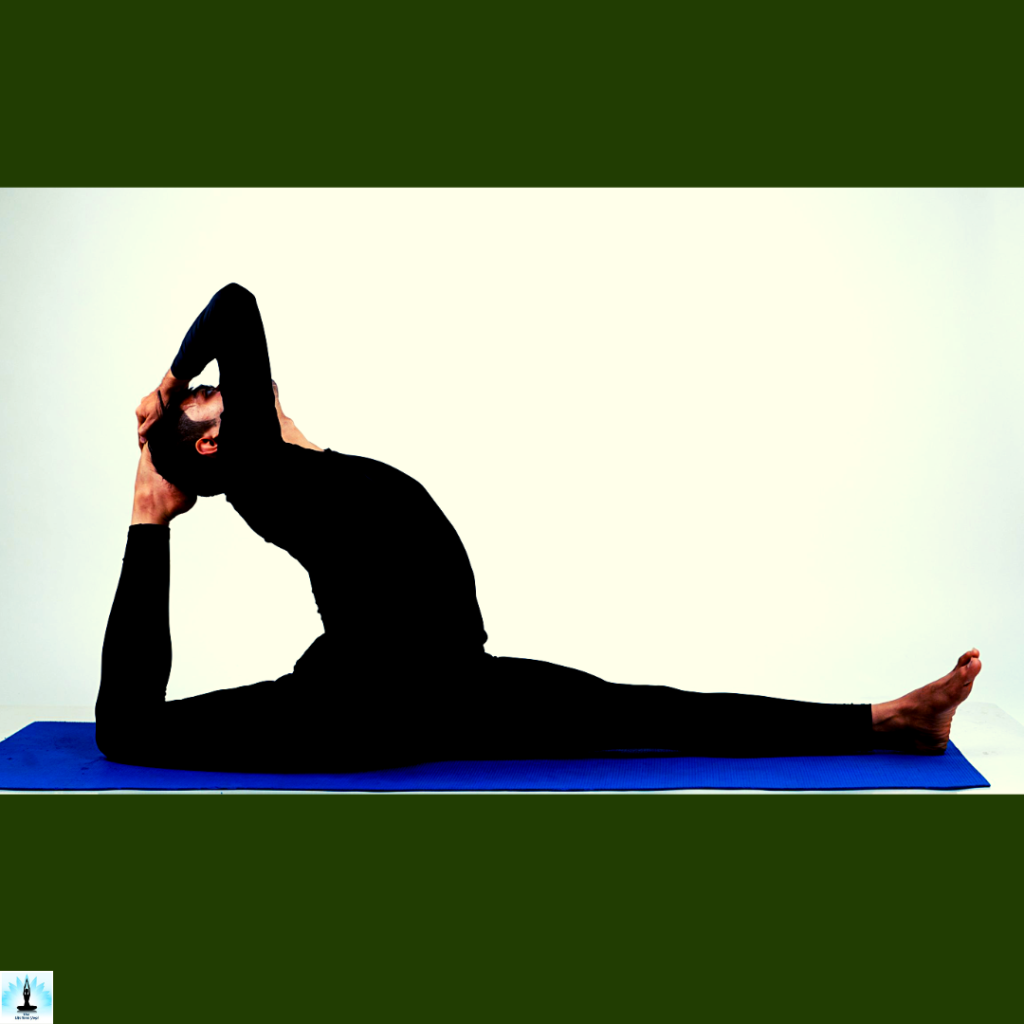
This advanced variation involves extending one arm overhead while holding the foot of the bent leg with the opposite hand. The extended arm adds an extra element of balance and backbend, requiring a combination of strength, flexibility, and focus. Eka Pada Rajakapotasana III provides a profound stretch along the front of the body, from the hip flexors to the chest and shoulders.
Therapeutic Applications of Eka Pada Rajakapotasana (Pigeon Pose)
Eka Pada Rajakapotasana proposes therapeutic benefits for various physical and emotional concerns. It is known to alleviate tension in the hips, groins, and lower back, making it beneficial for individuals with sciatica or those experiencing tightness in these areas. Additionally, the pose may provide relief from emotional stress and promote a sense of release, aiding in overall mental well-being.
Poses Related to Eka Pada Rajakapotasana (Pigeon Pose)
Preparatory Poses of Eka Pada Rajakapotasana
Low Lunge (Anjaneyasana):

Low Lunge is an excellent preparatory pose before Eka Pada Rajakapotasana. It stretches the hip flexors, quadriceps, and groins, helping to warm up and open the hips. The position of the back knee on the mat in Low Lunge allows for a gentler approach to hip flexibility.
Puppy Pose (Anahatasana):
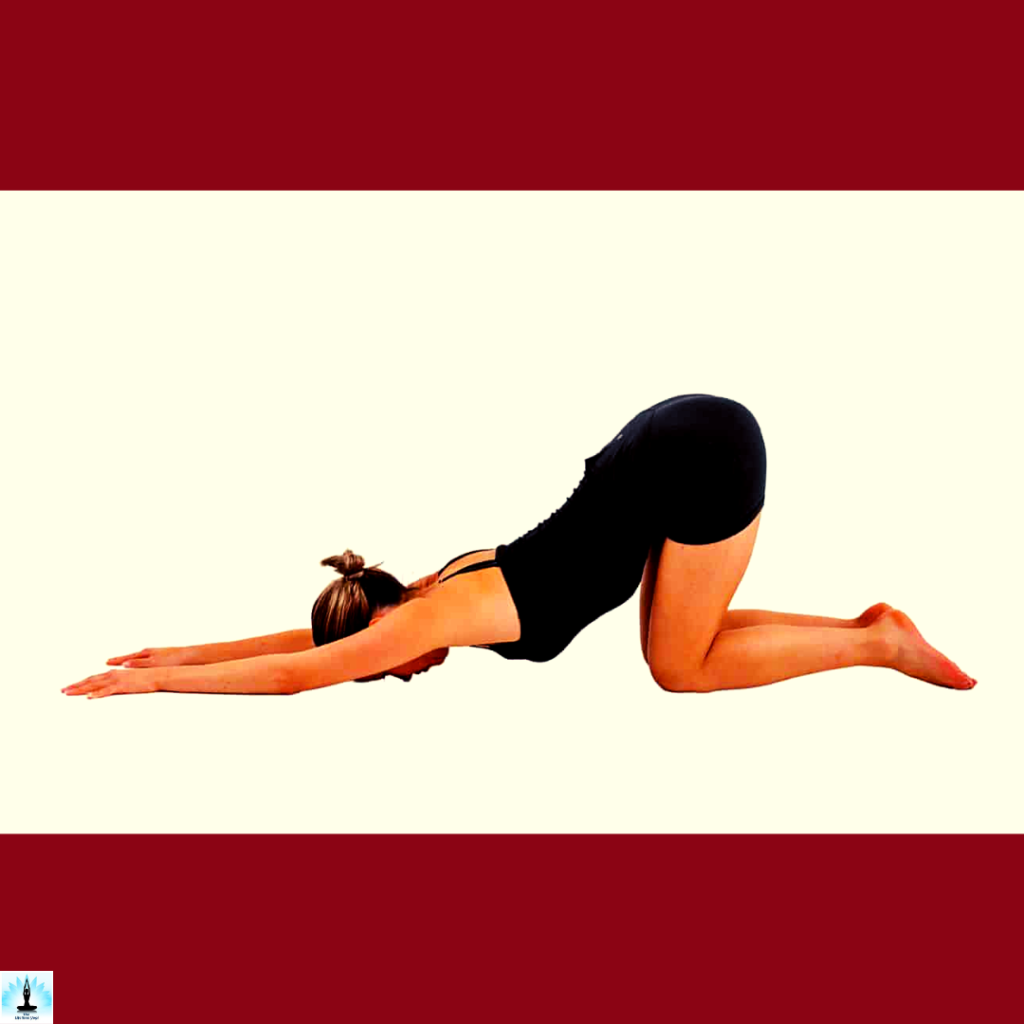
Puppy Pose is a beneficial prelude to Eka Pada Rajakapotasana, as it extends the spine, opens the chest, and encourages a gentle stretch in the shoulders and hip flexors. This pose prepares the upper body for the backbend element in Pigeon Pose and encourages mindful breathing and lengthening of the spine.
Follow-up Poses of Eka Pada Rajakapotasana
Cow Face Pose (Gomukhasana):
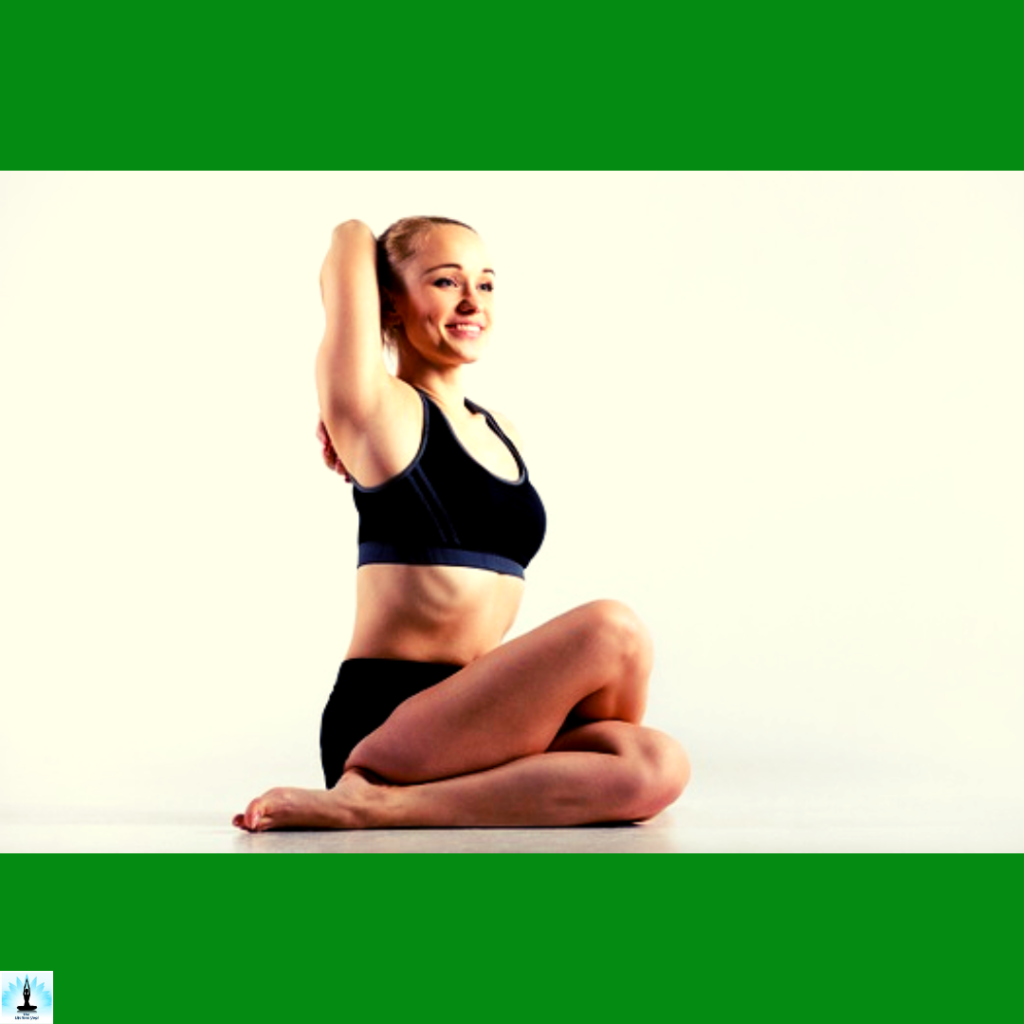
Following Eka Pada Rajakapotasana, Cow Face Pose is an effective choice to continue hip opening and stretch the shoulders. By bringing one leg over the other and stacking the knees, practitioners deepen the external rotation of the hips and stretch the arms behind the back, providing a counterbalance to the intensity of Pigeon Pose.
Seated Forward Bend (Paschimottanasana):
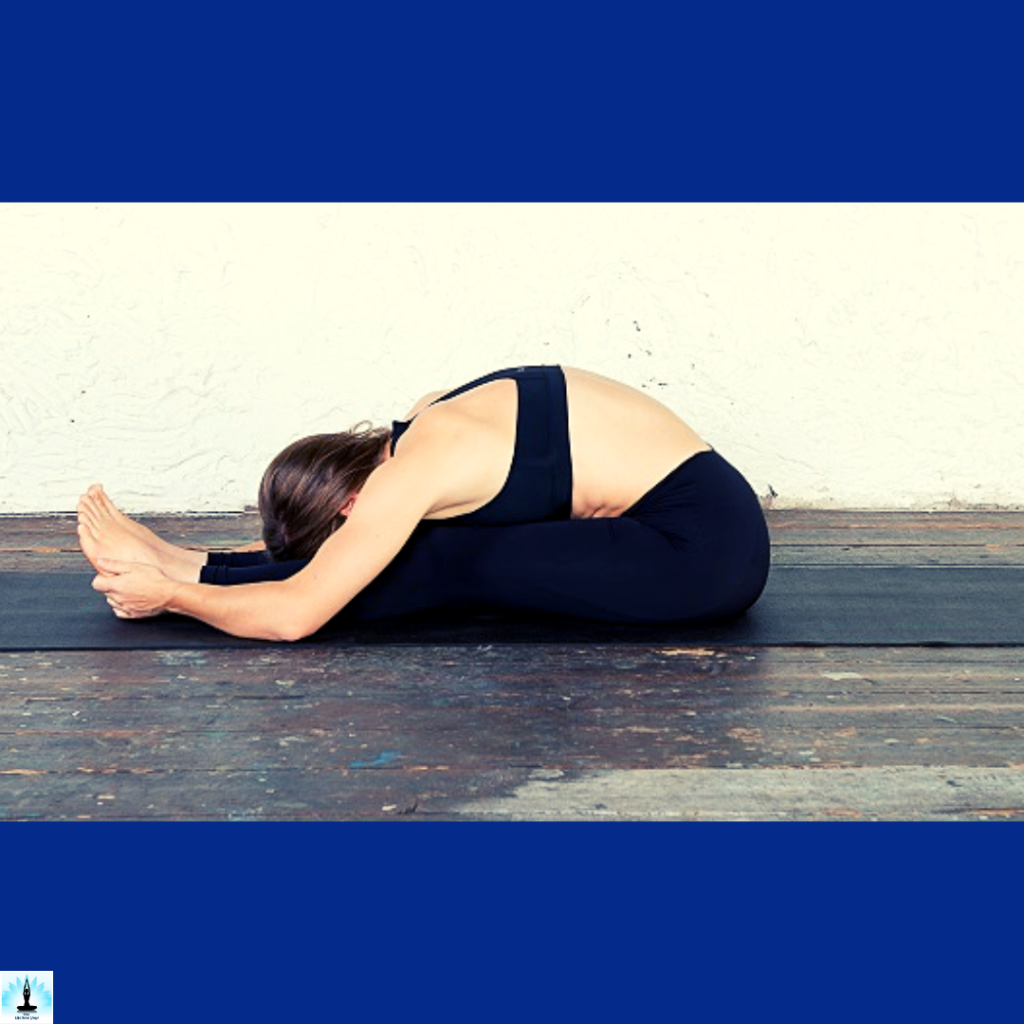
Seated Forward Bend is a grounding pose that complements Eka Pada Rajakapotasana by offering a forward fold to stretch the entire back and hamstrings. It helps release tension in the lower back and elongates the spine, providing a calming and introspective element to the practice after the intensity of Pigeon Pose.
Beginner’s Tip of Eka Pada Rajakapotasana (Pigeon Pose)
For beginners exploring Eka Pada Rajakapotasana, it is essential to approach the pose with mindfulness and respect for individual limitations. Utilizing props such as blocks or blankets under the hips can provide support and help maintain alignment. Starting with a modified version, such as the Thread the Needle pose, can serve as a gentle introduction to the hip-opening aspects of Pigeon Pose. Gradually increasing the intensity and depth of the stretch as flexibility improves is key to a safe and enjoyable practice.
Contraindications and Cautions of Eka Pada Rajakapotasana (Pigeon Pose)
Those with recent surgeries or chronic issues in these areas should approach the pose with care and consider consulting a healthcare professional or experienced yoga instructor for modifications. Pregnant individuals, especially in the later stages, should use props and modify the pose to accommodate the growing belly.
FAQ’s on Eka Pada Rajakapotasana (Pigeon Pose)
Q: Is Eka Pada Rajakapotasana Suitable for Beginners?
A: Eka Pada Rajakapotasana can be challenging for beginners due to its deep hip opening and backbending aspects. It is advisable for beginners to approach the pose gradually, with proper warm-up and modifications, and seek guidance from a qualified yoga instructor.
Q: Can Eka Pada Rajakapotasana Help Alleviate Lower Back Pain?
A: Eka Pada Rajakapotasana may provide relief from lower back pain by stretching and releasing tension in the hips and lower back. However, individuals with existing lower back issues should practice with caution, and modifications or props may be used for added support.
Q: How Often Should One Practice Eka Pada Rajakapotasana?
A: The frequency of practicing Eka Pada Rajakapotasana depends on individual comfort and proficiency. It is generally recommended to include hip-opening poses like Pigeon Pose a few times a week, allowing the body to adapt gradually. Consistent practice, combined with proper alignment, yields the best results.
Q: Can Eka Pada Rajakapotasana Be Practiced During Pregnancy?
A: Pregnant individuals should approach Eka Pada Rajakapotasana with caution, especially in the later stages of pregnancy. Modifications and the use of props are advisable, and consulting with a healthcare professional or experienced prenatal yoga instructor is crucial to ensure safety.
Q: How Can One Deepen the Stretch in Eka Pada Rajakapotasana?
A: To deepen the stretch in Eka Pada Rajakapotasana, practitioners can gradually work on bringing the front shin parallel to the short edge of the mat and the back leg farther back. Additionally, exploring advanced variations or incorporating props may intensify the stretch, but it should be done mindfully and within individual limits.
Q: Can Eka Pada Rajakapotasana Help with Emotional Release?
A: Eka Pada Rajakapotasana is often associated with emotional release due to its hip-opening nature. The hips are known to store emotional tension, and as they open in the pose, practitioners may experience a sense of release. Mindful breathing and a focused practice can contribute to this emotional aspect.
Q: What Precautions Should Be Taken for Individuals with Knee Discomfort in Eka Pada Rajakapotasana?
A: Individuals with knee discomfort should be cautious when practicing Eka Pada Rajakapotasana. Placing a blanket or cushion under the knee of the front leg can provide support. If discomfort persists, practitioners may need to modify the pose or choose alternative hip-opening poses that are gentler on the knees.
Q: Is It Normal to Feel Discomfort in The Hips During Eka Pada Rajakapotasana?
A: Some discomfort in the hips is normal, especially for those new to hip-opening poses. However, sharp pain or excessive discomfort may indicate improper alignment or individual limitations. Practitioners should listen to their bodies, use props, and modify the pose as needed to ensure a safe and sustainable practice.
Q: Can Eka Pada Rajakapotasana Be Part of a Regular Yoga Routine?
A: Yes, Eka Pada Rajakapotasana can be part of a regular yoga routine, especially for those looking to enhance hip flexibility and work on emotional release. Integrating the pose with a well-rounded practice that includes warm-up, cool-down, and other complementary poses contributes to a balanced and holistic yoga routine.
Conclusion
In conclusion, Eka Pada Rajakapotasana, or Pigeon Pose, stands as a symbol of both physical and emotional liberation within the vast landscape of yoga. As practitioners gracefully fold into this asana, they embark on a journey of self-discovery, embracing the dual nature of strength and surrender that the pose embodies. Eka Pada Rajakapotasana transcends its physical benefits, delving into the realms of emotional release and spiritual introspection.
References
- Sinha, S. C. (1996). Dictionary of Philosophy. Anmol Publications. p. 18. ISBN 978-81-7041-293-9.
- Sjoman, Norman E. (1999) [1996]. The Yoga Tradition of the Mysore Palace. Abhinav Publications. pp. 100–101. ISBN 81-7017-389-2.
- Iyengar, B. K. S. (1979) [1966]. Light on Yoga: Yoga Dipika. Thorsons. pp. 389–399. ISBN 978-1855381667.
- Lidell, Lucy; The Sivananda Yoga Centre (1983). The Book of Yoga: the complete step-by-step guide. Ebury. pp. 132–133. ISBN 978-0-85223-297-2. OCLC 12457963.
- Mehta, Silva; Mehta, Mira; Mehta, Shyam (1990). Yoga: The Iyengar Way. Dorling Kindersley. p. 143. ISBN 978-0-86318-420-8.
